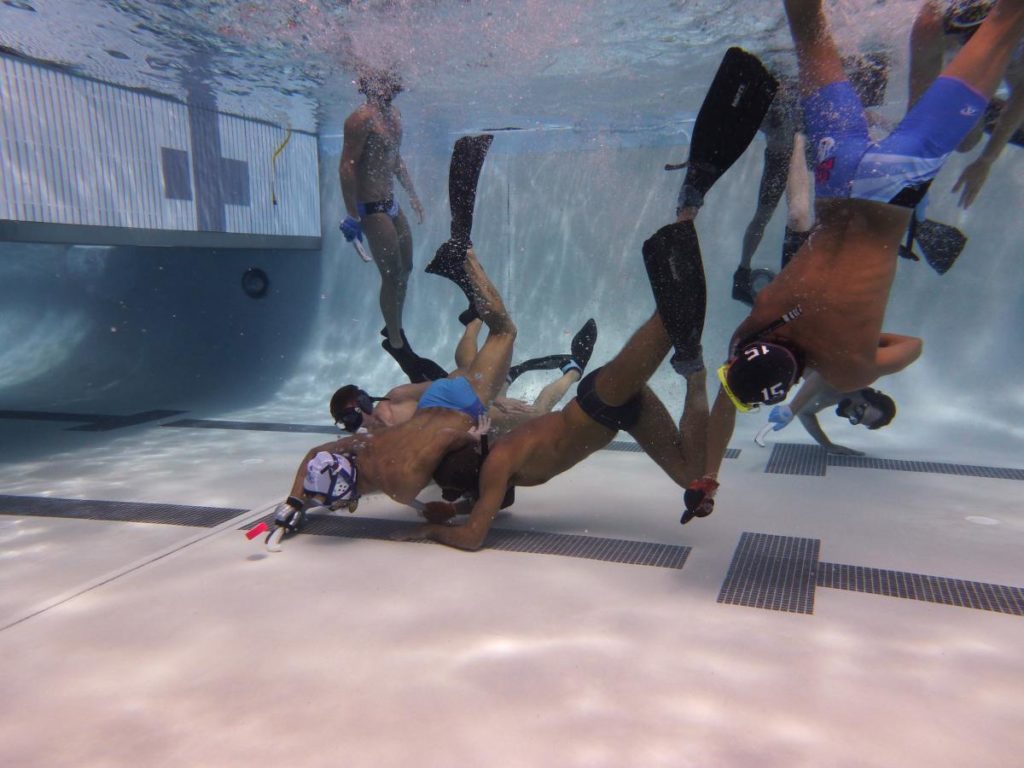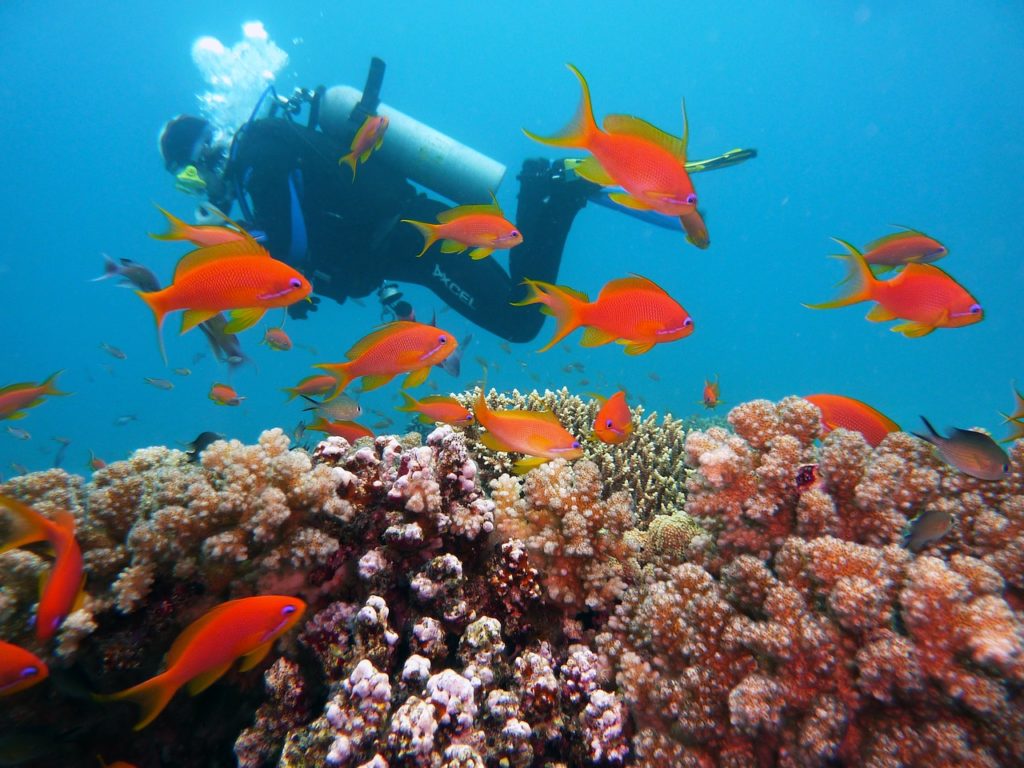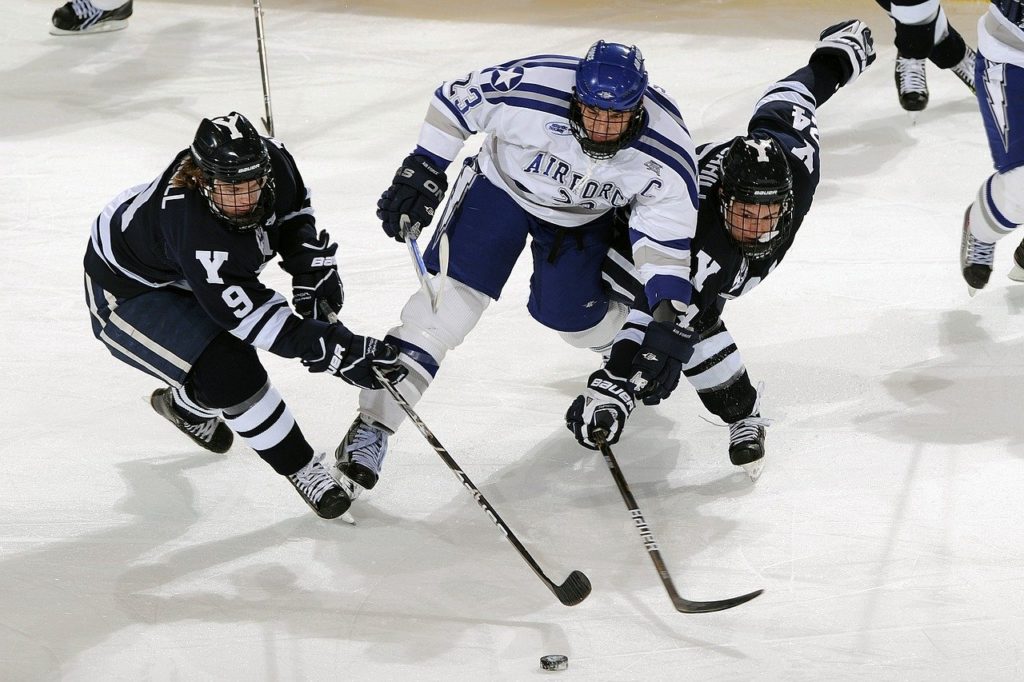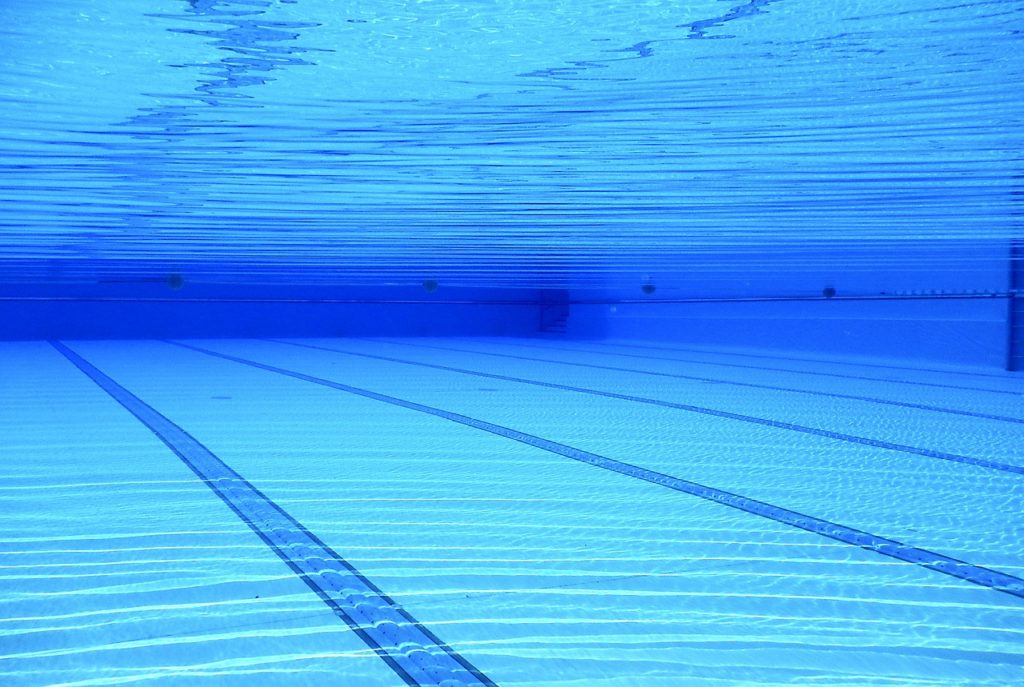January 20, 2020
Clark Weeks told us about the underwater hockey competitions, and even just underwater hockey in the first place. He is an avid player and on the men’s national team.
Underwater hockey is one of the most difficult underwater sports of the modern athletic world that pushes the endurance of players to extremes. Invented by the British Navy in the 1950s, this game has now spread to all parts of the world and is currently being played in over 20 countries. This popularity has also given rise to numerous competitions in this sport. The most prominent of these is the Underwater Hockey World Championship. It is held every second year and is the most coveted event in this category.

Photo from https://www.sportsdestinations.com/sports/hockey/inside-events-usa-underwater-hockey-10709
Underwater Hockey World Championship
Conducted on behalf of CMAS, the Underwater Hockey World Championship traces its roots back to 1980 when it was first held in Vancouver, Canada. Until 2006, this event was held every year. In 2006, due to a dispute between the CMAS underwater hockey commission members, the championship was shifted under the purview of the World Aqua challenge Association. This, however, was just an interim set up, as in 2008, the championship returned to the CMAS. The next Underwater Hockey World Championship is scheduled to be held in 2020 in Australia.
Competition Categories
It was decided to split the Championship into two events. There is now one for the Junior Grades which consists of U19 and U23. The other competition has the Elite and the Masters groups.
Dominant Countries
New Zealand and France are the World Champions at all levels except the Men’s U23 group which Turkey won.
2020 World Championship
The Championships will be held from July 20th to August 2nd. The location is the Gold Coast Aquatic Center in Gold Coast, Australia. Never heard of Gold Coast? It is on the east side of Australia, just a bit south of Brisbane.
The Aquatic Centre is impressive. It is state of the art and has six pools. The pool where the main competitions will be held is 50 meters long, 10 lanes wide and is 2 meters deep throughout the pool. Players will like the pool because the bottom is tiled. This makes for a fast surface. Two full sized courts will be set up in this pool.
In addition, there is a dry land dive training facility whatever that is as well as meeting rooms and a complete fitness center.
USA Underwater Hockey National Championships
The USA National Championships will happen a month before the World competition. They will be held from June 26th to 28th. The location will be in Denver, CO. So they will not only have to hold their breath underwater, they will also have thinner air to deal with when they surface. Seems like a double whammy.
The Rules of the Game
Underwater hockey is a thirty-minute game with a three minute halftime. Both sides have 12 players each and out of these only 10 can play in a single game. At any given point in time, the rules allow the presence of only 6 players on each side in the pool. The remaining 4 are interchange players. The sports equipment includes fins, snorkel, diving mask, and gloves. The puck weighs nearly 1.5 kilograms which makes sure that it does not float on top of the water. Underwater hockey is a contactless sport, which means that no player can interfere with another player.
Benefits of Playing Underwater Hockey
Since it combines the basic elements of diving, hockey, swimming, and snorkeling, underwater hockey has gained importance as a holistic water sport. The participating countries now promote the sport. Gone are the days when only the seamen of the British Navy played it. England, Australia, Canada, New Zealand, Japan, and France are the biggest promoters of underwater hockey.
Fitness Benefits
This sport has strong fitness benefits that can help you stay in shape. Since the players swim constantly, it translates into benefits that that can derive from a cardio exercise. It is also beneficial for your back. Interestingly, in underwater hockey, your body suffers minimal strain, since you play it underwater. So, if you have suffered an injury playing land-based hockey, you can easily transition to underwater hockey. This sport attracts an assorted range of players from across the field of aquatic activities. As a sport that can literally, take your breath away, underwater hockey is surely more fun to play than its grass field or ice rink based counterpart.
Clark Weeks and Underwater Hockey Competitions
Today, the Underwater Hockey World Championship is the most prominent tournament in this sport. There is, however, a push from the players to incorporate more tournaments to enhance the popularity of this sport. We hope that our story from Clark Weeks about underwater hockey competition was interesting and possibly even make you want to try it yourself.
See another post on underwater hockey here.


